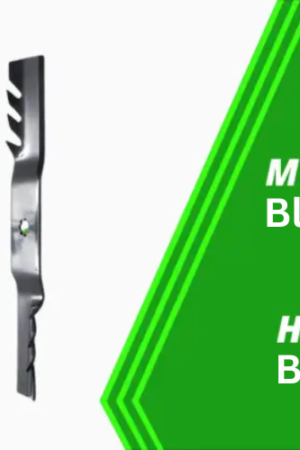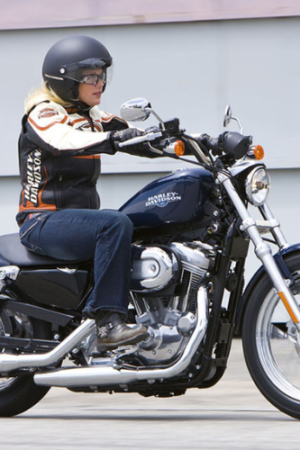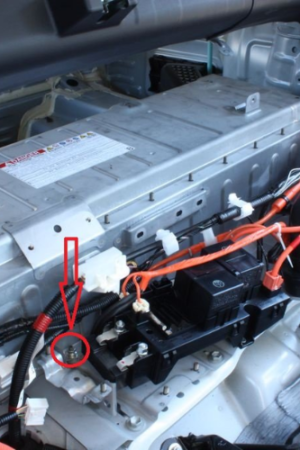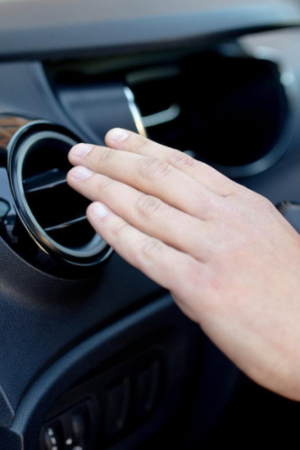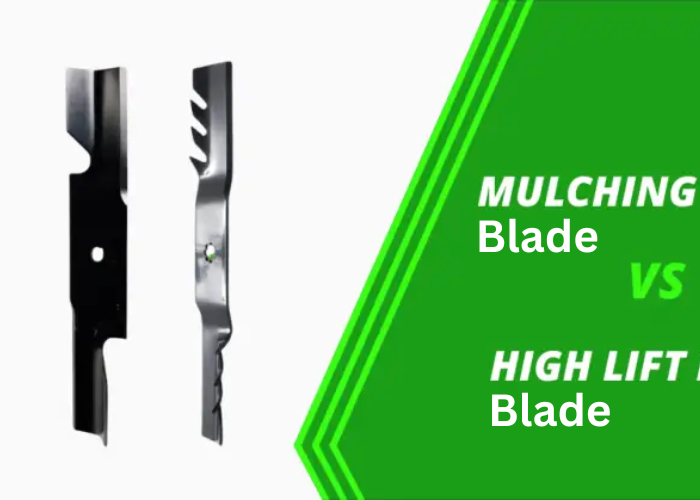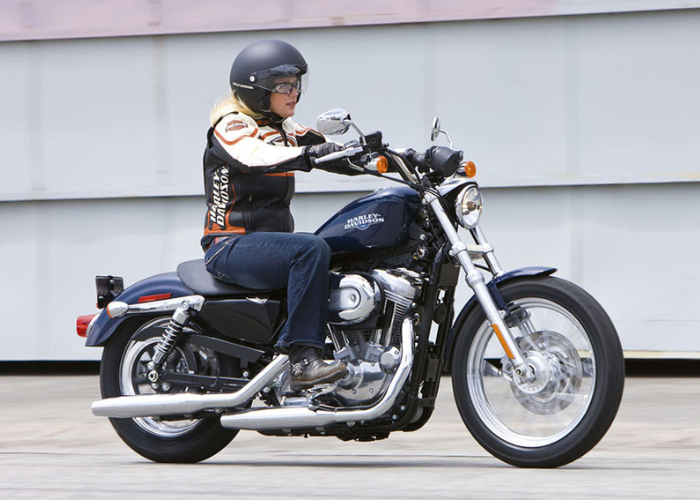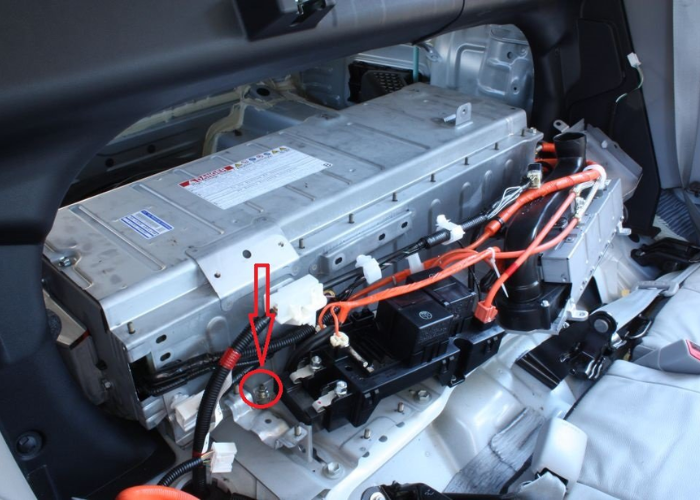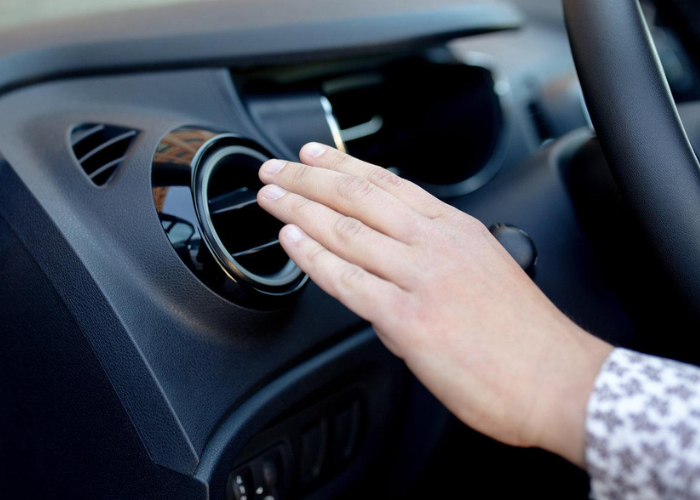Maintaining a lush, healthy lawn requires a combination of proper watering, fertilization, and regular mowing. When it comes to mowing, the choice of mower blade plays a crucial role in achieving the desired results. Two popular options are Mulching Blades vs High Lift, each designed to cater to specific lawn care needs. In this article, we’ll delve into the characteristics, benefits, and considerations of mulching blades and high-lift blades, helping you make an informed decision about which type is best suited for your lawn.
Understanding Mulching Blades:
Mulching blades, also known as 3-in-1 or all-purpose blades, are specially designed to cut grass finely and disperse the clippings evenly across the lawn. These blades feature a unique curved shape with multiple cutting surfaces, often referred to as “gator” or “humpback” blades due to their distinctive appearance.
The primary goal of mulching blades is to finely chop the grass clippings into smaller pieces and then disperse them back onto the lawn, where they can decompose and provide valuable nutrients to the soil.
Benefits of Mulching Blades:
- Nutrient Recycling: One of the most significant advantages of mulching blades is their ability to recycle nutrients. As the finely chopped grass clippings decompose, they release nitrogen and other essential nutrients back into the soil. This natural fertilization process helps to improve the overall health and vibrancy of the grass.
- Improved Lawn Appearance: Mulching blades leave behind a clean, manicured appearance on the lawn. The finely chopped clippings are hardly noticeable, giving the lawn a well-groomed look.
- Less Yard Waste: By mulching the clippings instead of bagging them, you can significantly reduce the volume of yard waste. This is not only environmentally friendly but also saves you the hassle of dealing with clippings disposal.
- Moisture Retention: The layer of mulched clippings acts as a natural mulch, helping to retain soil moisture and reduce water evaporation. This can be especially beneficial during hot and dry periods.
Considerations for Mulching Blades:
- Frequency of Mowing: For optimal results with mulching blades, it’s recommended to mow more frequently, ideally when the grass is not too tall. Mulching works best when you’re cutting shorter grass, as longer grass clippings might clump and hinder an even distribution.
- Lawn Health: While mulching blades provide nutrient recycling, they might not be suitable for lawns with excessive thatch buildup. Thick thatch layers can prevent the proper distribution of the mulched clippings and affect overall lawn health.
Exploring High Lift Blades:
High lift blades, as the name suggests, are designed to create maximum lift and discharge of grass clippings. These blades have a unique shape with a pronounced upward curve on the ends, allowing them to generate strong airflow under the mower deck.
The primary objective of high-lift blades is to expel clippings efficiently through the discharge chute, making them an excellent choice for lawns that need to be cut less frequently or in areas with taller grass.
Benefits of High Lift Blades:
- Clean and Efficient Discharge: High lift blades are specifically designed to provide efficient discharge of clippings through the chute. This prevents clippings from clumping and clogging the mower deck, ensuring a consistent and even cut.
- Tall Grass Management: If you have areas of your lawn with taller grass, high-lift blades are better equipped to handle the increased volume of clippings. They prevent the grass from matting and can handle more challenging mowing conditions.
- Ideal for Bagging: If you prefer to bag your clippings for a neater appearance or if your lawn requires it due to local regulations, high lift blades are better suited for this purpose. They create strong airflow that facilitates the collection of clippings in the bag.
Considerations for High Lift Blades:
- Clippings Disposal: While high-lift blades are efficient for discharge and bagging, they do not recycle nutrients like mulching blades. If you want the benefits of natural fertilization, high-lift blades might not be the best choice.
- Lawn Appearance: High lift blades may leave behind more noticeable clippings on the lawn compared to mulching blades. This can affect the aesthetic appeal of your lawn if not managed properly.
Choosing the Right Blade for Your Lawn:
The choice between mulching blades and high-lift blades depends on several factors, including your lawn’s condition, maintenance preferences, and aesthetic priorities. Here are some considerations to help you make an informed decision:
- Lawn Health and Nutrient Needs: If maintaining a healthy lawn with natural nutrient recycling is a priority, mulching blades are the better option. They promote soil fertility and contribute to long-term lawn health.
- Frequency of Mowing: If you’re committed to mowing your lawn regularly, mulching blades can deliver the desired results. However, if you mow less frequently, high-lift blades might be more suitable for the efficient discharge of clippings.
- Grass Height and Condition: For lawns with uneven terrain, tall grass, or overgrown areas, high lift blades are better equipped to handle the challenging conditions and ensure even mowing.
- Aesthetic Appeal: If achieving a manicured, clean-cut appearance is crucial, mulching blades are likely your best choice. They leave minimal clippings on the lawn’s surface, resulting in a tidy look.
- Clippings Disposal: Consider whether you want to bag your clippings or leave them on the lawn. If bagging is necessary, high-lift blades facilitate this process effectively.
Conclusion
The choice between mulching blades and high-lift blades depends on your lawn care goals and preferences. Mulching blades excel in nutrient recycling and maintaining an immaculate lawn, while high-lift blades are ideal for efficient discharge and handling challenging mowing conditions.
Assess your lawn’s unique characteristics and your maintenance priorities to select the blade type that aligns with your needs. Regardless of your choice, regular maintenance and proper mowing techniques will contribute to a healthy, lush lawn that you can enjoy year-round.

